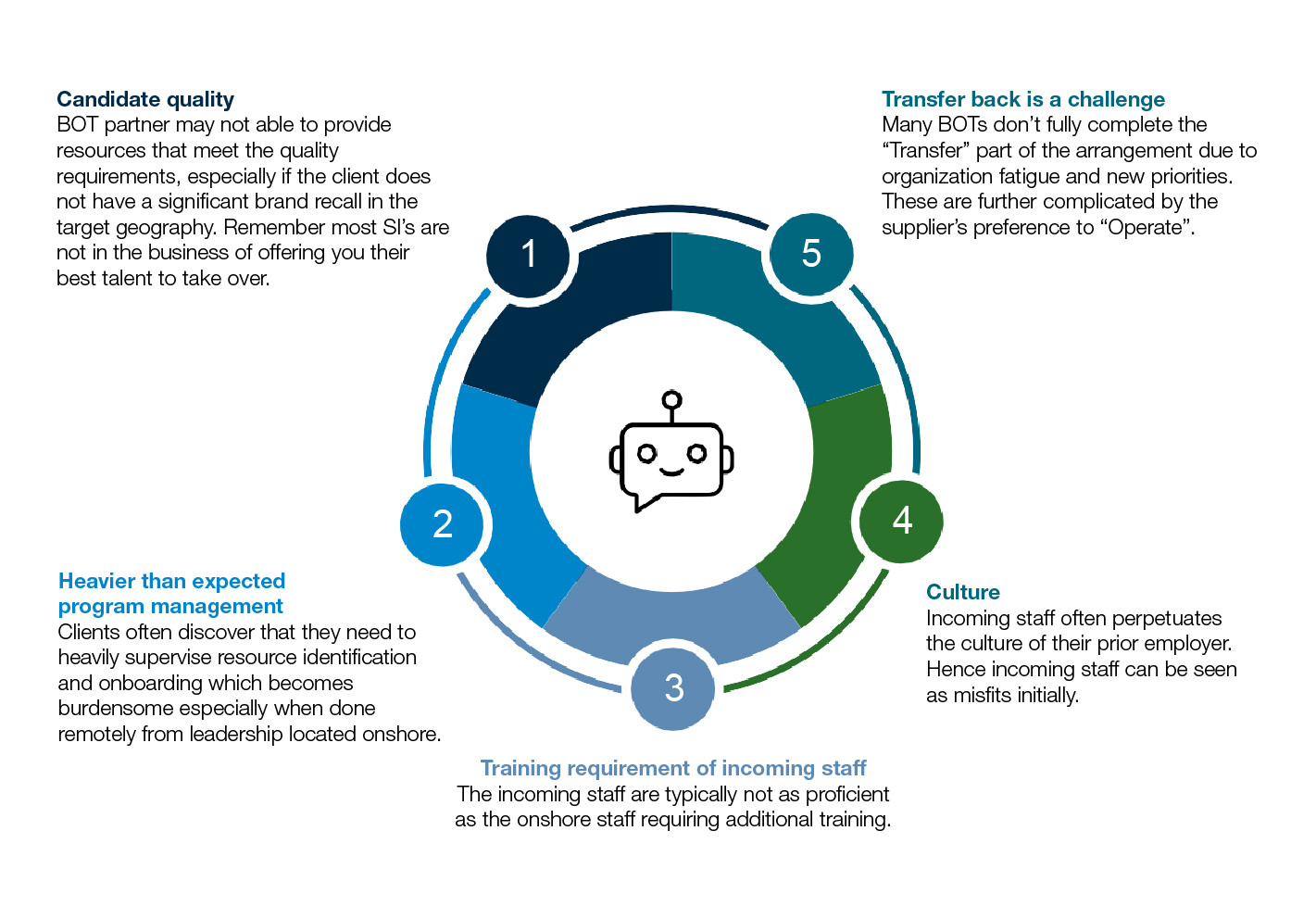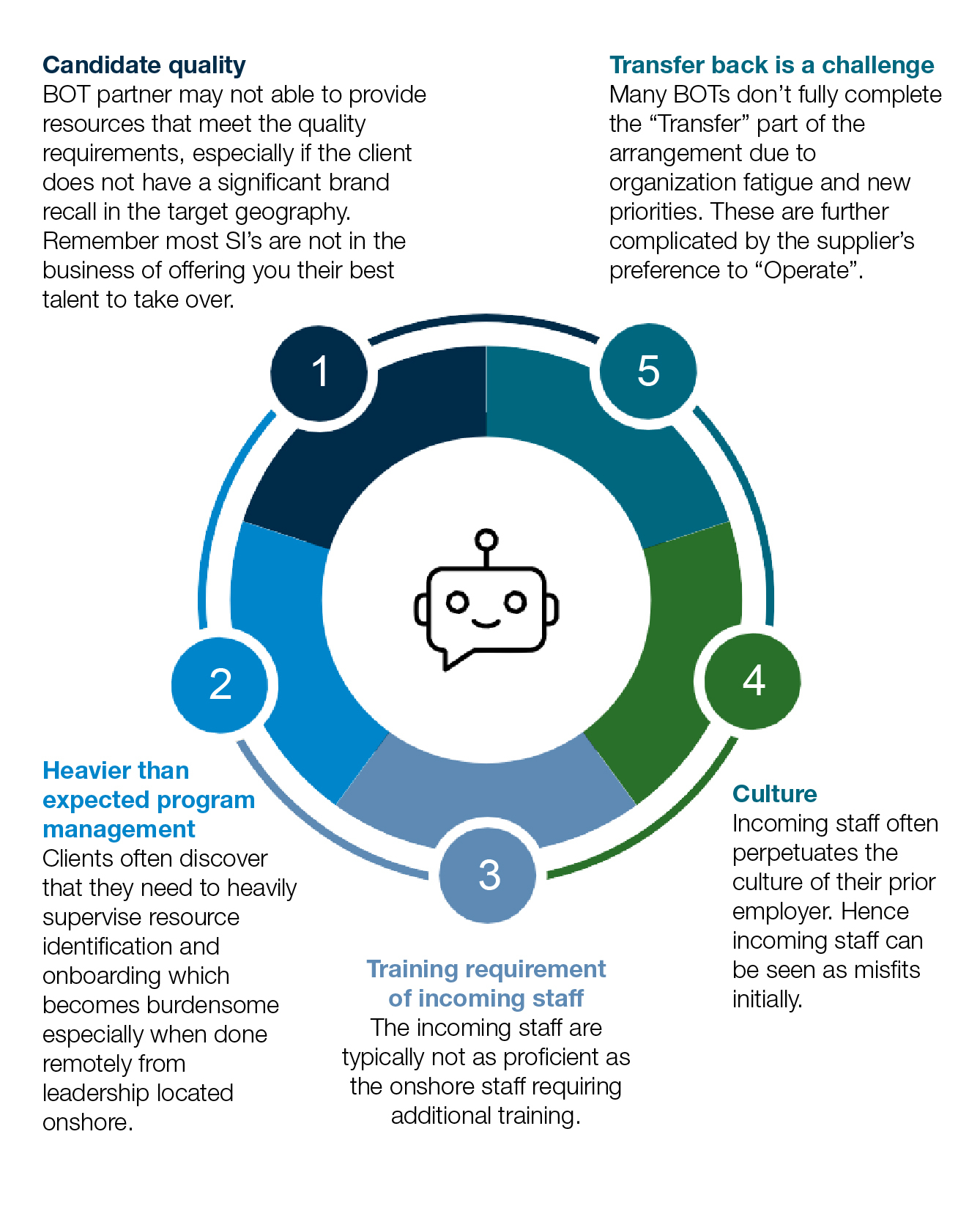Insourcing at Scale: Reclaiming Control Through Global Capability Centers
Back to All InsightsGlobal Capability Centers
The shift is clear: companies are bringing strategic IT capabilities back in-house. As data-driven business models, generative AI, and cybersecurity threats converge, organizations must balance direct control over strategic IT delivery while keeping costs down. Global capability centers (GCCs) have emerged as an important option.

The insourcing imperative
For the past several decades, companies, in search of lower costs, outsourced support functions. Now that’s reversing, particularly in IT. As technology becomes a crucial differentiator in business strategy, more companies are insourcing IT capabilities to improve service delivery, maintain competitive advantage, foster innovation, and align more closely with core business objectives.
As organizations consider in sourcing, one key decisions they face is how to execute the insourcing strategy – Build or Partner?
Build or Partner?
This decision is foundational in shaping the structure of the GCC, and the role it plays in the company – low cost back-office or innovation hub. The two primary options for GCCs are self-built and partner-assisted. Each model offers a distinct balance of speed, savings, and innovation.

Comparing Execution Models
Self-built
Independently establish and manage the GCC, maintaining full control over processes, resources, and strategy
Setup time: 18-36 months
When to choose self-built:
- You have offshore delivery experience and familiarity with local markets
- Your organization has strong brand presence in target geographies
- You want maximum control and can cultivate company culture from day one
- You’re willing to invest 18-36 months in the setup process
Advantages
- Maximum control over processes and strategy
- Easy to cultivate company culture
- No premium paid to partners
Disadvantages
- Large upfront investment (high fixed costs relative to size)
- Longer setup time could delay business case realization
- Must build local expertise from scratch
Partner-assisted
Leverage partner talent pool, infrastructure, expertise, and other assets to accelerate the GCC setup
Setup time: 3-24 months depending on engagement model – – virtual captive, build-operate-transfer (BOT) and joint venture (JV)
When to choose partner-assisted:
- You’re new to offshore delivery and lack local market expertise
- You have limited brand recognition outside your home market
- You need faster deployment (3-24 months)
- You want to leverage a partner’s scale benefits and existing infrastructure
- You’re willing to accept potential loss of some in-house expertise in exchange for speed
Advantages
- Limited upfront investment
- Partner’s scale benefits reduce per-unit costs
- Faster time to market
Disadvantages
- Potential loss of in-house expertise
- Premium paid to partner for services
- Could involve complex financial arrangement and management structure (especially in JVs)
Real-world examples
A leading chemicals manufacturer with a presence in India sought to scale its offshore capabilities. Leveraging its brand presence and familiarity with offshore delivery models, the company opted for a self-built approach, with a contingency plan to engage a vendor to mitigate potential delays.
Conversely, a US retailer company chose the BOT model to establish a nearshore hub. With no prior offshore delivery experience and limited brand recognition outside the United States, this approach allowed the company to partner with an experienced supplier to build and manage operations effectively.
These examples underscore the importance of evaluating each organization’s long-term needs when selecting an execution model. Whether opting for virtual captives, BOT, joint ventures, or a self-built approach, companies must align their choices with their long-term goals and operational capabilities.
Build Operate Transfer – is it the best balance of the two major options?
The answer to this question is “it depends”. We notice that on paper BOT checks a lot of the boxes of a risk mitigated rapid buildout. However, it is no panacea, and organizations often find a many challenges they need to navigate in BOT relationships:



All these challenges can be mitigated through a thoughtful approach and a structured program, however organization must not see BOT as a “turnkey solution”. They need to own the deliverables from day-one, even though the supplier has responsibility during “Build and Operate” phases.
Take action now

Global capability centers can help make an organization more competitive without breaking the bank. By carefully with your execution model and tailor it to align your specific business goals and risk appetite.
We encourage business leaders to develop adaptable IT capabilities that drive both innovation and long-term growth. By seizing this opportunity, organizations can confidently manage the challenges of today’s global landscape while laying the foundation for enduring success.
The question isn’t whether to insource strategic IT capabilities. It’s how fast you can do it—and whether you’ll lead or follow in the race for competitive advantage.
